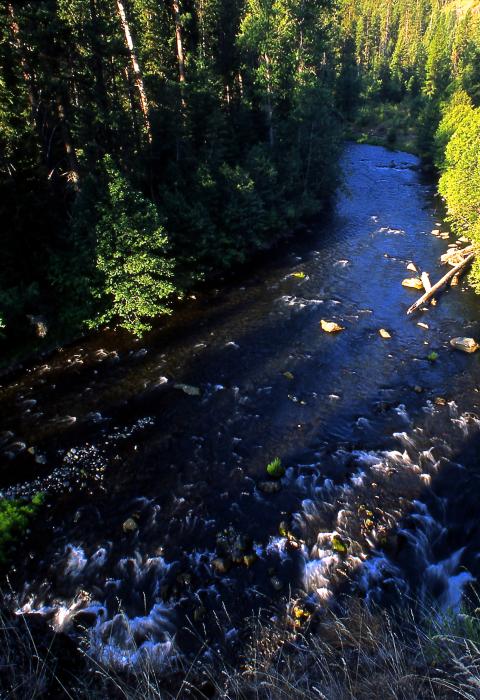Wenaha River
Oregon
The Wenaha River is located in northeast Oregon on the Umatilla National Forest, beginning in the Wenaha-Tucannon Wilderness. The Wenaha drainage is located on the eastern slope of the northern Blue Mountains of Oregon. The river flows between rugged basalt outcrops rising 1,600 feet to the plateau above. The river is noted for its remoteness and largely primitive setting. Exceptional opportunities exist for big game hunting, fishing, camping, and hiking. Wild runs of Chinook, steelhead, and bull trout are found here, and it is one of the best rainbow trout streams in northeastern Oregon.
Designated Reach
October 28, 1988. From the confluence of the North and South Forks to its confluence with the Grande Ronde River.
Outstandingly Remarkable Values
Fish
The river provides excellent habitat for many wild fish populations that are valuable to the region for their beauty, food source, and fishing opportunities. Native Wenaha stocks of spring Chinook, summer steelhead, and bull trout use the river for spawning and rearing. Historically, coho and an early fall Chinook salmon were also present.
Recreation
Big-game hunting and fishing draw a majority of the visitors to the Wenaha. Elk hunting draws many visitors in the fall, seeking a primitive hunting experience in the Wenaha-Tucannon Wilderness. Other activities that draw visitors to the Wenaha are camping, horseback riding, traveling with pack strings, sightseeing, pursuit of solitude, photography, nature study, swimming, and wildlife viewing. The combination of a rugged, remote-feeling landscape and outstanding opportunities for solitude make the Wenaha a unique place.
Scenery
For those willing to travel by primitive means, the Wenaha boasts a gorgeous display of plant life, seasonal color variation, an abundant variety of wildlife, and a rugged landscape.
Wildlife
The corridor is a critical link for diverse habitats in the region that host amazing wildlife. Some species that frequent the Wenaha River are Rocky Mountain bighorn sheep, Rocky Mountain elk, moose, mule deer, white-tailed deer, cougar, black bear, wolves, bobcat, river otter, pine marten, beaver, blue and ruffed grouse, chukar, valley and mountain quail, Lewis woodpecker, bald eagle, golden eagle, peregrine falcon, and other small mammals, reptiles, and amphibians. There is an especially high variety of big game species present in the area, and wildlife viewing is most popular in the spring when animals are raising their young and taking advantage of new spouts of brush, grass, and forbs.

